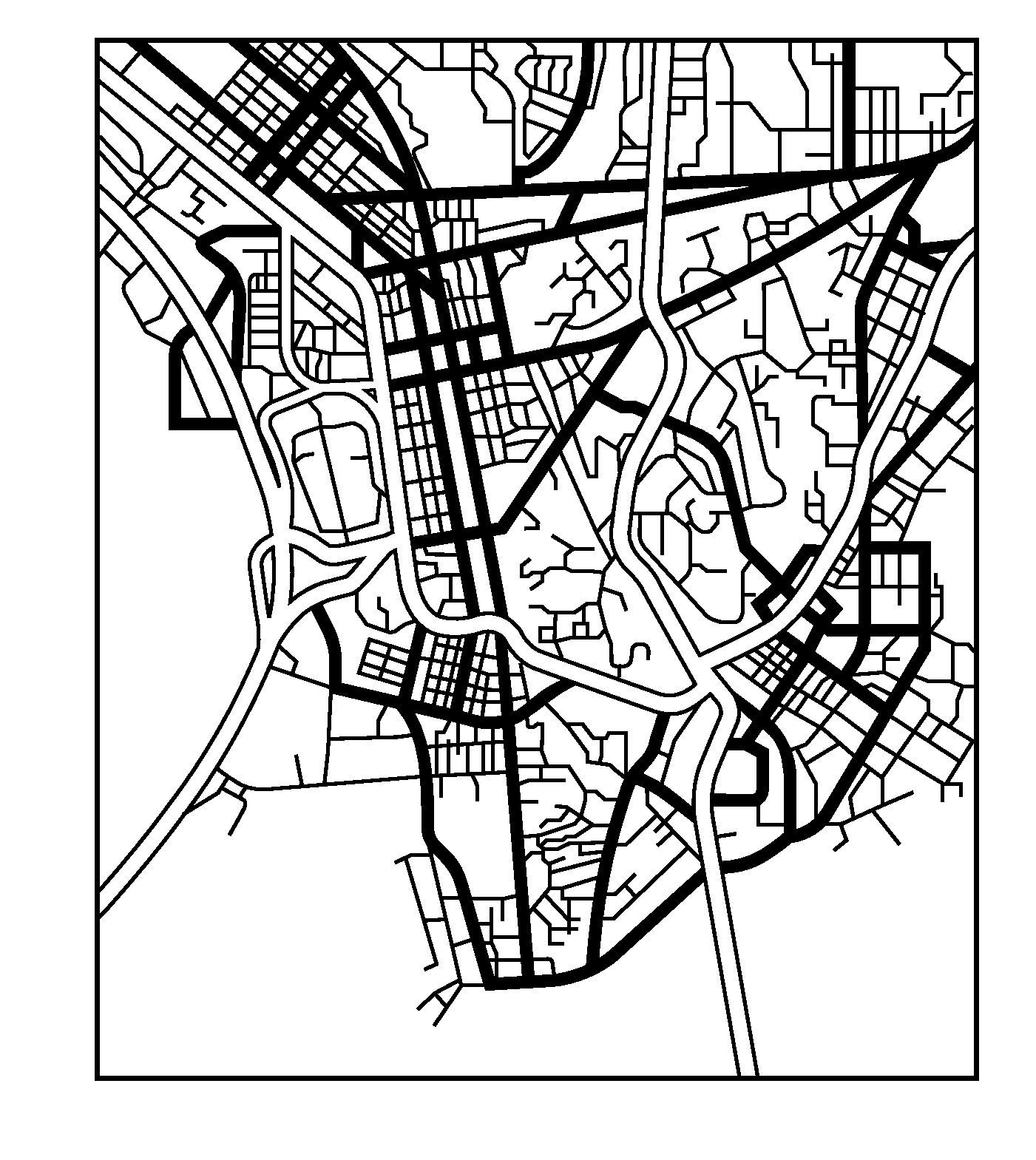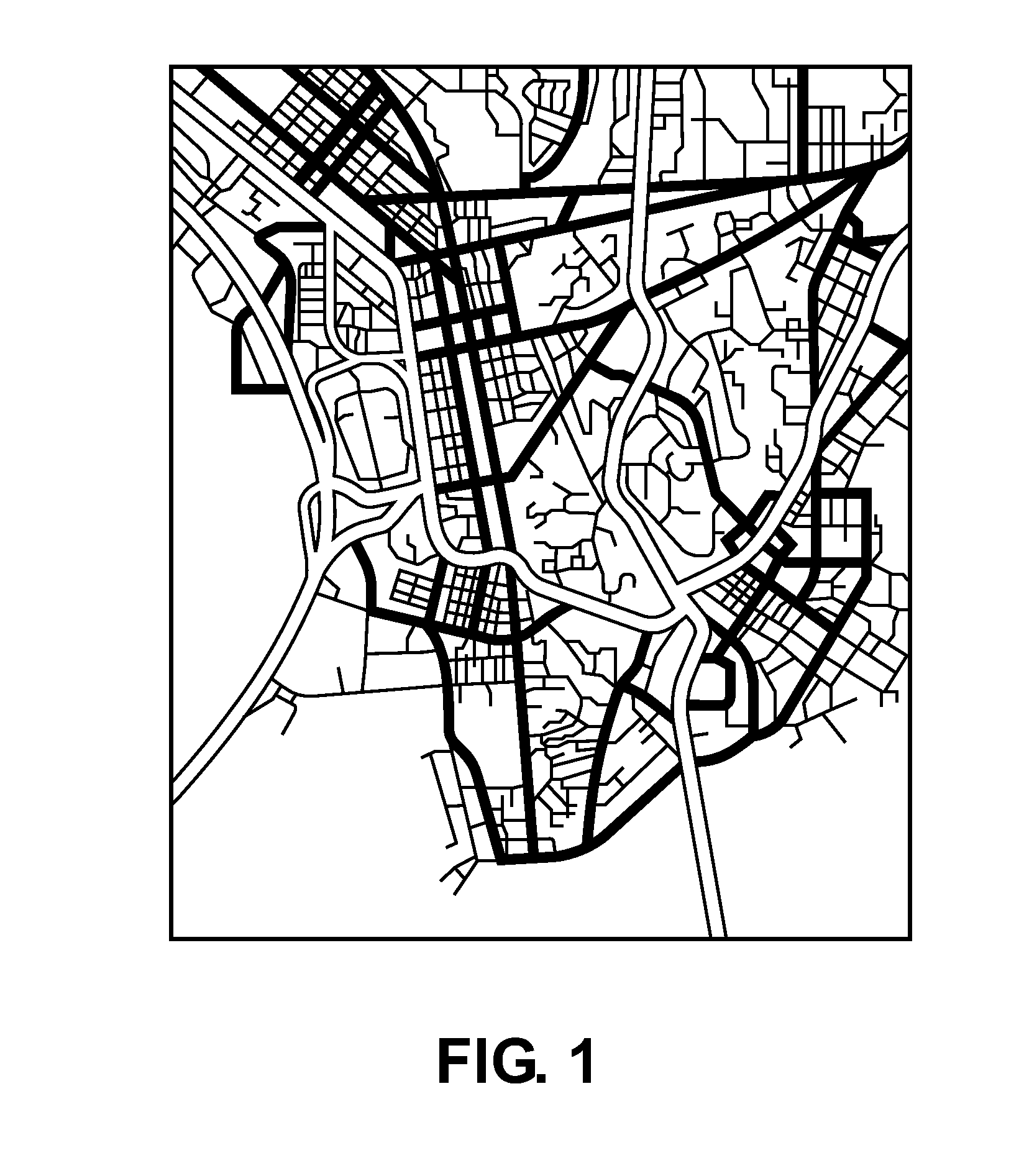Digital map editing process using active contour manipulation
- Summary
- Abstract
- Description
- Claims
- Application Information
AI Technical Summary
Benefits of technology
Problems solved by technology
Method used
Image
Examples
Embodiment Construction
[0031]Referring to the Figures, wherein like numerals indicate like or corresponding parts throughout the several views, a method of optimizing a source geometry by using active contours is shown schematically in FIG. 3. Source geometry function block 30 represents a new data set. This new data set may, for example, originate from a digital map of the type corresponding to a region of land in reality. Alternatively, the new data set which comprises the source geometry may be derived from probe data, or from some other source. It should be again noted that, although many references herein ascribe the probe data as the source geometry and the network features as the external energy source, this is merely one expression of these general concepts. Indeed, the source geometry is the geometry that is turned into active contours and that is iteratively optimized directly to a new geometry. Therefore, in situations where the probe data is considered more reliable than the network elements i...
PUM
 Login to View More
Login to View More Abstract
Description
Claims
Application Information
 Login to View More
Login to View More - R&D
- Intellectual Property
- Life Sciences
- Materials
- Tech Scout
- Unparalleled Data Quality
- Higher Quality Content
- 60% Fewer Hallucinations
Browse by: Latest US Patents, China's latest patents, Technical Efficacy Thesaurus, Application Domain, Technology Topic, Popular Technical Reports.
© 2025 PatSnap. All rights reserved.Legal|Privacy policy|Modern Slavery Act Transparency Statement|Sitemap|About US| Contact US: help@patsnap.com



